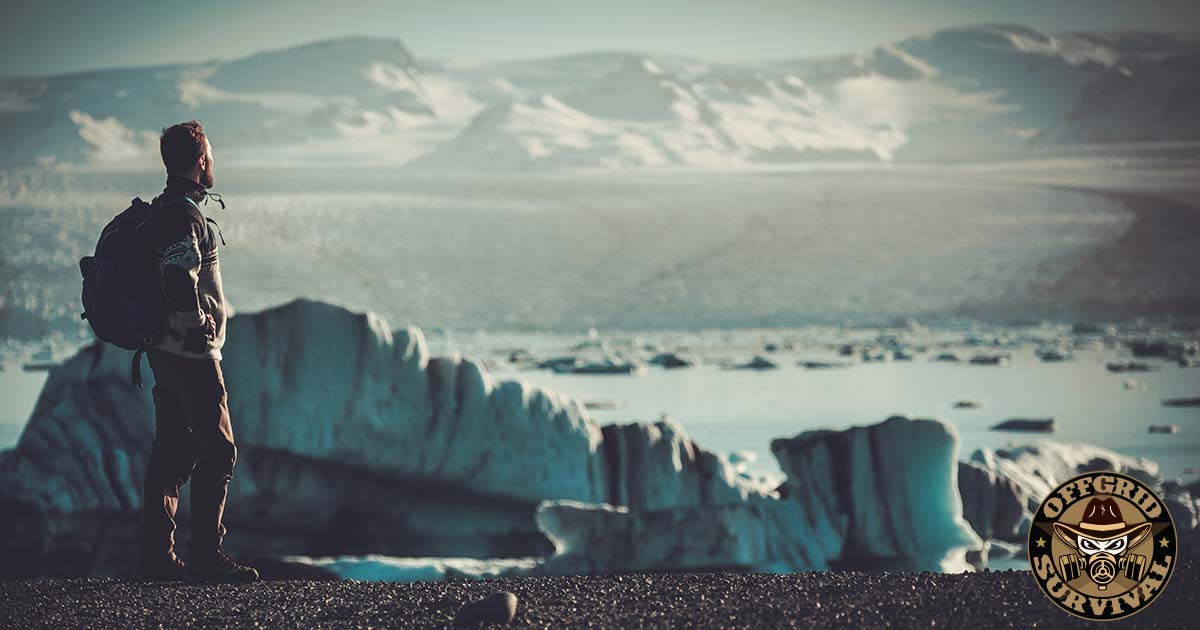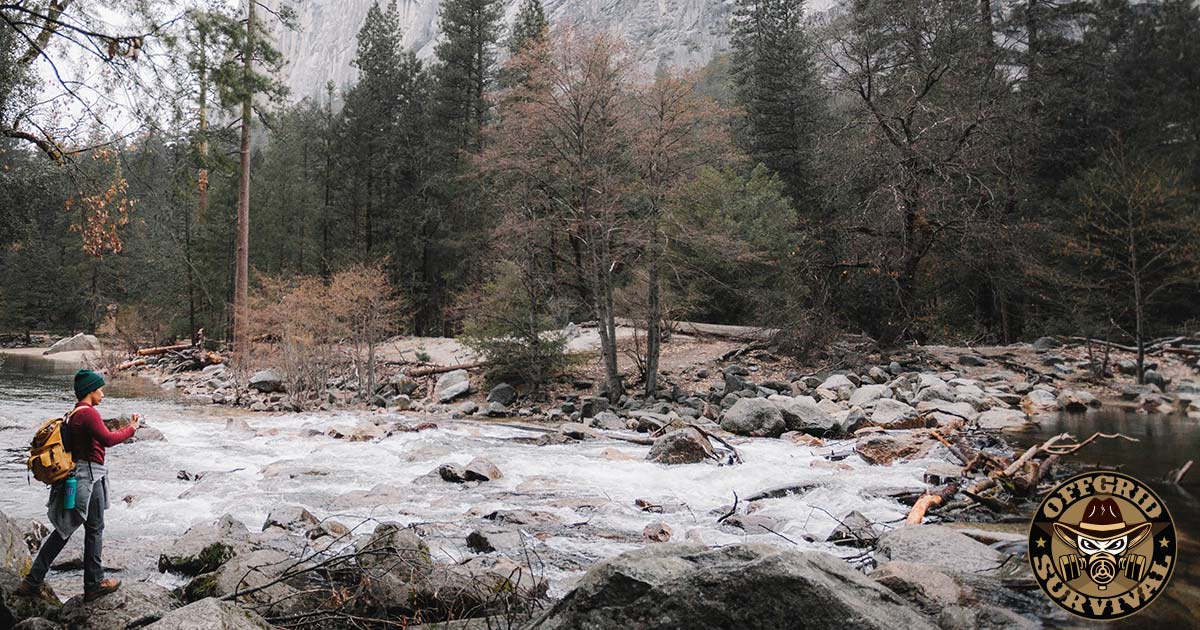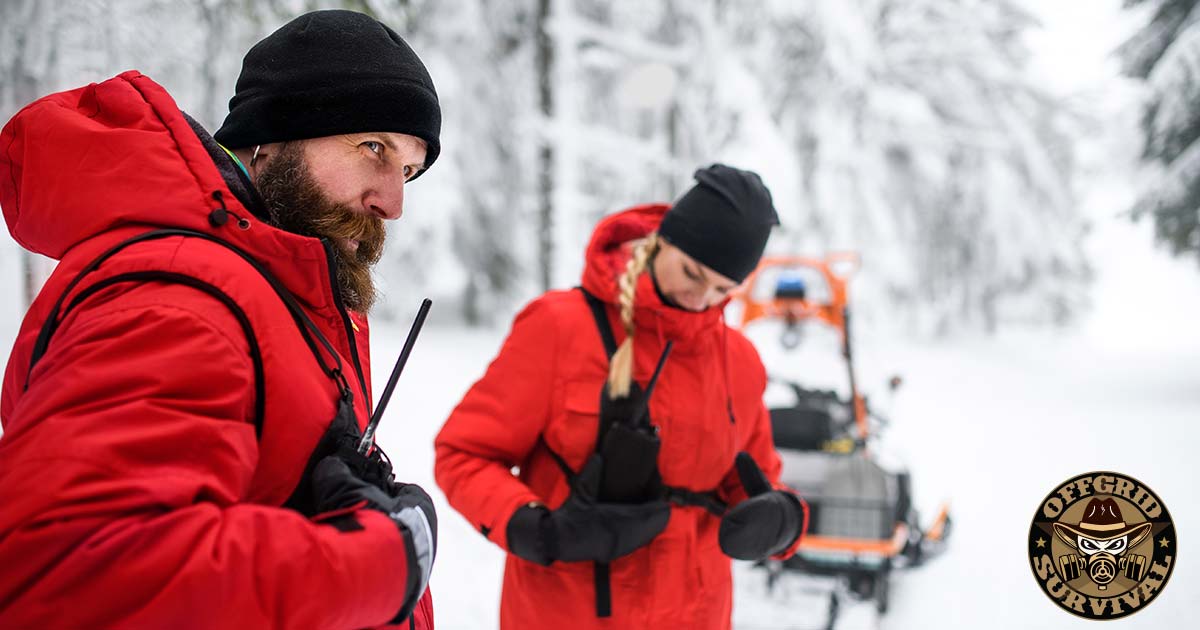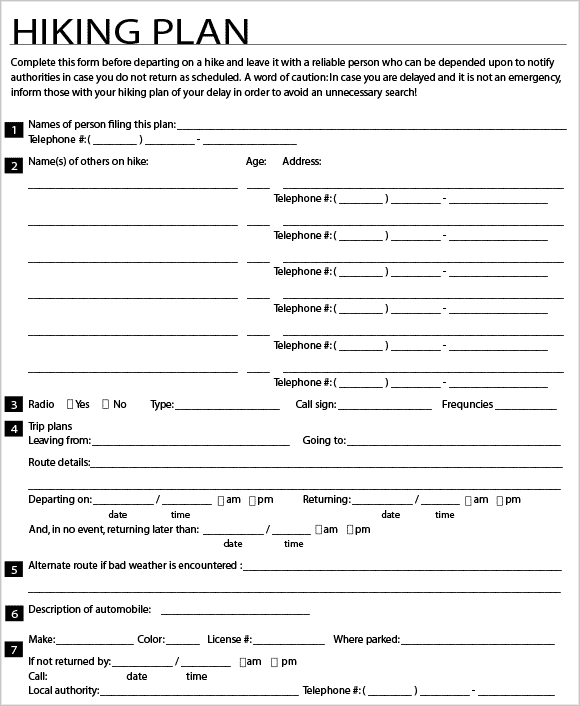
A Comprehensive Guide to Planning Your Next Outdoor Adventure
The sense of adventure, thrill, and freedom to explore the great outdoors can be exhilarating. As the call of the wild echoes in your ears, it’s easy to get caught up in the excitement. But with all outdoor adventures, there are potential dangers and risks that you can’t ignore. From unpredictable weather conditions, challenging or unexpected terrain, and wildlife encounters to medical emergencies and other unforeseen circumstances, you need to be ready to face whatever nature might be getting ready to throw at you.
Whether you are an experienced outdoorsman or a beginning adventurer, proper pre-trip planning is essential to ensure a safe and enjoyable trip.
But don’t worry; we’re not here to rain on your parade! In fact, we’re here to help you prepare for your next outdoor adventure, so hopefully, it’s filled with nothing but unforgettable memories! So, lace up your hiking boots, strap on your backpack, and let’s dive into the world of pre-trip planning for your next outdoor adventure!
Before you dive headfirst into the excitement of your next adventure, let’s talk about a crucial aspect that often gets overlooked – pre-trip planning. I know, I know, planning may not sound as thrilling as the adventure itself, but trust me, it’s the key to a safe and successful outing. So, grab a seat by the campfire and chat about why pre-trip planning is essential for your next adventure.
Whether your fly fishing a river in the backcountry, backpacking some uncharted wilderness trails, or even just camping and fishing in what appears to be a safe national forest, being prepared is everything.
Sure, spontaneity can be fun, but it’s important to anticipate the unexpected when venturing into remote wilderness areas. That’s where pre-trip planning comes in. It’s like having a trusty map and compass to navigate through the unknown, helping you mitigate risks, anticipate challenges, and make informed decisions along the way. Think of it as your secret weapon to ensure a safe and enjoyable outdoor adventure.
One of the reasons why pre-trip planning is essential for hiking and backpacking is because these activities often take you far away from civilization. You’ll find yourself in the heart of nature, where access to resources and help may be limited. So, if you want to avoid any “uh-oh” moments in the wild, it’s essential to plan ahead. As the saying goes, “Failing to plan is planning to fail.” And we definitely don’t want that to happen on your next adventure!

The first step in planning a successful outdoor adventure is understanding your destination. This involves carefully selecting the right spot, gathering detailed information about the trails you will be using, and considering various other factors to ensure a safe and enjoyable trip. This includes researching factors such as water sources, weather patterns, and potential threats along your planned route. By gathering this information now, you can make informed decisions about what gear to pack and how to prepare for your trip – you make any risks and limit their effect on your safety.
“I am prepared for the worst, but hope for the best.”
– Sir Edmund Hillary
Researching Destinations: When choosing a destination for your outdoor adventure, it’s essential to conduct thorough research and select a location that aligns with your skill level, interests, and timeframe. Consider factors such as the difficulty level of the trails, the length of the hike, the elevation gain, and the terrain. Make sure these match up with your skill level, and your level of fitness. Look for reviews and recommendations from experienced hikers or outdoor enthusiasts, and gather as much information as possible about the destination, including maps, trail guides, and online resources.
Checking Regulations and Permits: While this may not be a safety concern, not knowing the regulations can put a severe damper on your trip when the game warden comes up and spoils an otherwise awesome adventure.
Many hiking and backpacking trails have specific regulations and permit requirements that must be followed. And as any hunter or fisherman knows, a license and knowledge of the game regulations is essential to not ending up with a fine, or even worse, arrested in the back of some overzealous game wardens truck. It’s essential to thoroughly check the regulations and requirements of the area you will be hiking in and ensure that you obtain the necessary permit/license before your trip. Also, make e sure to understand the areas safety rules and regulations, including fire restrictions, waste disposal, and camping restrictions, and follow them to protect the environment and ensure a safe and responsible trip.
Water Sources Along the Route: Knowing what water sources are available along your planned route is crucial for determining how much water you need to carry, how many water bottles to pack, and what type of filtration system to carry. Research and map out the water sources along the trail, such as streams, lakes, or springs, and plan accordingly for your hydration needs during the trip.
Average Temperatures and Weather Patterns: Understanding the average temperatures and weather patterns along your route is important for packing the right clothing, shelter, and weather-related gear. Research the typical weather conditions for the time of year you will be hiking, including temperature ranges, precipitation, and potential weather hazards. This information will help you pack appropriately and stay prepared for changing weather conditions.
Potential Threats Along the Route: Consider potential threats you may face along the trail, ranging from route-related dangers such as extreme climbs, flash flooding, avalanche dangers, or difficult terrain, to wilderness dangers such as wild animals or poisonous insects. Research and understand the potential threats in the area and take appropriate precautions, such as carrying bear spray, using insect repellent, or having the necessary gear for navigating challenging terrain.
Understanding your destination and routes is crucial for planning a successful hiking or backpacking adventure. By thoroughly researching and understanding your destination, trail information, regulations and permits, as well as considering factors such as water sources, weather patterns, and potential threats, you can make informed decisions about your gear, safety precautions, and overall preparedness for an enjoyable and safe outdoor adventure.

When it comes to hiking, backpacking, or any outdoor activity that takes you out into the wilderness, your gear can make or break your trip. But it’s not just about having the latest gadgets or the fanciest equipment; it’s about selecting gear that’s tailored to your specific adventure. And guess what? It all starts with pre-trip planning!
As an experienced outdoorsman, I’ve learned that the gear I choose plays a crucial role in my trip’s ultimate success. But I don’t just throw random items into my backpack; I carefully analyze the conditions and obstacles I’m likely to face and select the gear that complements my skills and keeps me safe in the face of potential dangers.
So, how do you choose the right gear for your adventure?
Before you hit the trail, take the time to research the weather, terrain, and potential challenges of your destination. For example, will you be hiking in hot and dry conditions or facing unpredictable weather patterns? Will you encounter rocky trails, river crossings, or steep ascents? Understanding the unique demands of your trip will help you make informed decisions when it comes to selecting the right gear.
Once you clearly understand the conditions you’ll be facing, it’s time to create a gear list. Start with the essentials, such as a reliable backpack, sturdy hiking boots, and weather-appropriate clothing. Consider the duration of your trip, the availability of water sources, and the potential need for shelter. Do you need a tent, sleeping bag, or camp stove? Are trekking poles, a GPS device, or a first aid kit necessary for your trip? Tailor your gear list to meet the specific requirements of your adventure.
Remember, the key to choosing the right gear is to strike a balance between comfort and weight. Carrying too much gear can slow you down and make your trip more challenging, while packing too little may leave you unprepared for unexpected situations. It’s all about finding that sweet spot that meets your needs without weighing you down.
As a survival-minded outdoorsman, I always prioritize safety and preparedness when it comes to gear selection. So I invest in high-quality gear that’s reliable, durable, and designed for the challenges of the environments I will be in. I also make sure to test my gear before heading out, to ensure that everything functions properly and fits comfortably.

Before you hit the trail, it’s important to make sure you’re physically fit and in good health. If you’ve spent the last couple of months drinking beer and watching Netflix, now is the time to get serious and really consider what you are getting ready to do.
Assessing Your Physical Fitness Level: Before embarking on a hiking or backpacking adventure, assess your physical fitness level and consult with a healthcare professional if you have any health concerns or medical conditions that may affect your ability to hike or backpack. It’s important to be aware of your own limitations and take necessary precautions to ensure your safety on the trail.
Preparing Yourself Physically: Hiking and backpacking can be physically demanding, so it’s important to prepare yourself physically for the challenges ahead. This may include improving your cardiovascular endurance, strength, flexibility, and balance. Incorporate regular physical exercise into your routine, such as cardiovascular activities like hiking, biking, or running, as well as strength training exercises to build the necessary muscle strength for carrying a loaded backpack.
Regular Physical Exercise: Hiking and backpacking can be physically demanding, so it’s important to prepare yourself physically for the challenges ahead. Start incorporating regular physical exercises into your daily routine to build your endurance and strength. This may include cardiovascular activities like hiking with a loaded backpack, which simulates the conditions you will encounter on the trail, or any other activities that will improve your cardiovascular endurance, strength, flexibility, and balance.
Incorporate regular physical exercise into your routine, such as cardiovascular activities like hiking, biking, or running, as well as strength training exercises to build the necessary muscle strength for carrying a loaded backpack. For example, practice hiking with a loaded backpack to gradually increase your stamina and get accustomed to the weight and movement of a backpack.
Taking Necessary Precautions: Preventing injuries is crucial for a safe hiking or backpacking trip. Take necessary precautions, such as wearing appropriate footwear that provides good traction and support, using trekking poles for stability on uneven terrain, and taking breaks to rest and hydrate to avoid overexertion. Pay attention to your body and listen to any warning signs of fatigue or discomfort, and take appropriate action to prevent injuries.
Packing Essential Medications and First Aid Supplies: It’s important to be prepared for minor injuries or health concerns that may arise during your trip. Pack essential medications that you may require, as well as a basic first aid kit with supplies such as bandages, blister care, and any other necessary first aid items. This will help you address minor injuries or health concerns and ensure your well-being on the trail.
Pack the Right Mindset! In addition to gear, don’t forget to pack the right mindset. Being mentally prepared for the challenges of the trail is just as important as having the right physical gear. Stay informed, be adaptable, and always have a backup plan. With the right gear and the right mindset, you’ll be well-equipped to tackle whatever comes your way on your hiking and backpacking adventure. So, gear up for success, and let’s hit the trail with confidence!
Taking care of your physical fitness and health is crucial for a safe and enjoyable hiking or backpacking adventure. By assessing your physical fitness level, preparing yourself physically, practicing regular exercise, taking necessary precautions, and packing essential medications and first aid supplies, you can ensure that you are well-prepared for the challenges that are waiting for you out on the trail.

Despite your best efforts in pre-trip planning, there may be moments when unforeseen events occur, and you find yourself thrust into a survival situation. The wilderness can be harsh and unpredictable, and facing unexpected challenges can be frightening if you’re not prepared. However, being aware of the potential risks and preparing for the unexpected can give you a leg up, so it is important to approach your adventure with a healthy level of respect and caution.
Create a Trip Plan and Leave Copies for Rescuers: Don’t head out without creating and sharing a detailed trip plan with a trusted person. Include your itinerary, expected return time, and emergency contact information. This way, someone will know your whereabouts and can raise the alarm if you don’t return as planned. It’s a small step that can make a huge difference in keeping you safe.
Your Plan Should look something like this:

A printable version can be downloaded here…
Know What Emergency Services are in the Area: Take the time to familiarize yourself with the location of the nearest emergency services, such as ranger stations, medical facilities, or rescue services, and how to contact them in case of emergencies. Knowing where to find help can be a lifeline in critical situations.
Check Cell Service Availability: Before you set out on your adventure, research and determine if there will be portions of your route where cell service may be unavailable. It’s important to be aware of areas with poor or no cell reception so that you can plan accordingly.
Consider Alternative Emergency Communication: Depending on the route conditions and remoteness of the area, it may be wise to bring additional forms of emergency communication, such as a shortwave transmitter or satellite messenger. These devices can provide reliable communication options in areas where cell service is unavailable.
Carry a First Aid Kit: Accidents can happen outdoors, so carry a well-stocked first aid kit and know how to use it for minor injuries or medical emergencies. Include essential items like bandages, antiseptics, medications, and any personal medical supplies you may need. Being prepared with a first aid kit can be a game-changer in handling unexpected situations.
Be Aware of Hazards: Each outdoor environment has its own set of potential hazards, so take the time to familiarize yourself with the specific risks of the area you’ll be exploring. This may include wildlife encounters, river crossings, steep terrain, or falling rocks. Once you know the risks, take necessary precautions such as carrying bear spray, using proper river crossing techniques, and avoiding hazardous areas.
Start Collecting Information about your Routes: Gathering information about your route before you leave is essential. Utilize resources such as trail association websites, guidebooks, online forums, hiking clubs, and historical data to gather as much information as possible about your planned route. This can help you identify potential challenges and hazards beforehand.
Consult with Experts: Seek advice from experts before setting out on your adventure. This can include park rangers, search and rescue experts, or other experienced hikers who have first-hand knowledge of your route. Their insights and recommendations can be invaluable in helping you avoid pitfalls and dangers associated with your planned route.
Emergency Shelter: It’s always wise to carry an emergency shelter, such as a tarp or bivy sack, in case of unexpected situations where you may need to spend the night outdoors. Even if you’re not planning on camping, having a lightweight emergency shelter can provide crucial protection from the elements in case of an unforeseen event.
Expect the Unexpected: The great outdoors can sometimes be anything but peaceful. As outdoorsmen, we may encounter unexpected challenges, even in the world’s remotest areas. In fact, I’ve personally experienced more issues with people than with wildlife during my adventures in the backcountry. Unfortunately, this problem seems to have been exacerbated with more troublemakers venturing into the outdoors after the COVID-19 shutdowns.
One particular incident that stands out was when I stumbled upon a makeshift campsite in a remote area. The scene was littered with crap and a strong chemical odor. Soon, two individuals emerged from the shadows, displaying erratic and aggressive behavior. It quickly became apparent that they were probably methheads and quite possibly making methamphetamine in the area. This experience served as a stark reminder that problems one would typically be prepared for in an urban environment can still catch you off-guard in the backcountry.
It highlighted the importance of being prepared for unexpected self-defense threats, even when far away from civilization. Luckily I always carry a firearm, and once the meth addicts caught a glimpse of it – along with a display of confidence and some colorful language — the situation quickly rectified itself and I was able to get out without further problems.
As the push toward legalized cannabis continues, Mexican cartels have abandoned their traditional marijuana farms in Mexico, instead moving their operations to remote backcountry areas. Public lands have become a preferred area of operation for these increasingly violent and sophisticated organizations. It’s important to note that this isn’t a lighthearted Cheech and Chong scenario from the movies – these cartels are known to use violence without hesitation as part of their business operations. So, as you plan your next outdoor adventure, it’s crucial to expect the unexpected and be prepared for anything, including potential encounters with other people in remote areas.
Remember, being prepared and informed is the key to staying safe in the outdoors. Don’t take chances with your survival. Stay connected and stay prepared for any unforeseen circumstance, and have a safe and memorable adventure!

The SAS Survival Handbook by John ‘Lofty’ Wiseman: This classic wilderness survival guide is a comprehensive resource for outdoor enthusiasts. It covers various topics, including navigation, shelter building, fire making, food procurement, first aid, and more. This book, written by a former SAS soldier, provides practical advice and techniques based on real-world survival experiences.
Wilderness Medicine: Beyond First Aid by William W. Forgey, M.D.: This book is a must-have for outdoor adventurers who want to be prepared for medical emergencies in remote wilderness settings. It covers essential medical knowledge and skills needed to handle injuries and illnesses in the wilderness, including assessment, treatment, and evacuation. Written by an experienced wilderness medicine expert, this book provides valuable information on managing medical emergencies in the backcountry.
The Backpacker’s Field Manual: A Comprehensive Guide to Mastering Backcountry Skills by Rick Curtis: This comprehensive guide is packed with practical advice on backcountry skills, including navigation, shelter building, water purification, food procurement, and more. It also covers essential topics such as risk management, trip planning, and emergency preparedness. This book, written by an experienced outdoor educator, provides essential information for backpackers and hikers looking to enhance their outdoor skills.
The Complete Idiot’s Guide to Backpacking and Hiking by Jason Stevenson: This beginner-friendly guide provides a comprehensive overview of backpacking and hiking, including trip planning, gear selection, navigation, camping skills, and wilderness safety. It covers various terrain and environments and provides practical tips and advice for enjoyable and safe outdoor adventures. This book is a great starting point for those new to backpacking and hiking.
The Ultimate Situational Survival Guide by Robert Richardson. While this might not be one you expect on a wilderness survival book list, we’ve encountered our fair share of backwoods methheads, pot growers, and complete psychopaths in areas where you might not expect them. This is a good and practical resource for outdoor enthusiasts who want to be prepared for unexpected situations, including encounters with criminals in the wilderness. This book covers a wide range of survival scenarios, including self-defense techniques, strategies for dealing with hostile individuals or groups, and ways to protect yourself and your belongings.
The Bushcraft Boxed Set: Bushcraft 101; Advanced Bushcraft; The Bushcraft Field Guide to Trapping, Gathering, & Cooking in the Wild; Bushcraft First Aid by Author: Dave Canterbury. This comprehensive boxed set by Dave Canterbury is a must-have for anyone interested in wilderness survival, bushcraft skills, and first aid in the wild. It is an incredible resource for outdoor adventurers who want to learn how to effectively survive and thrive in the wilderness, and ensure they have the right knowledge and skills to handle emergencies and unexpected situations.


